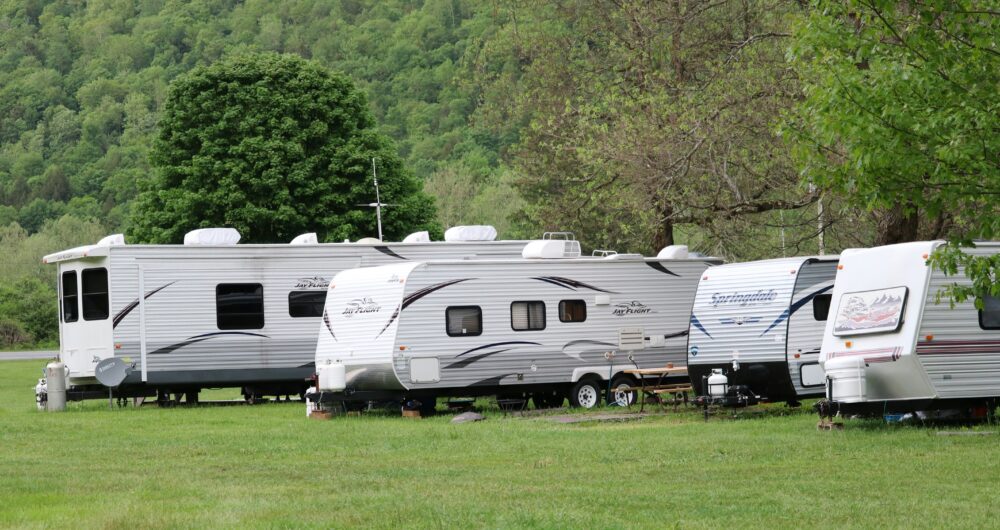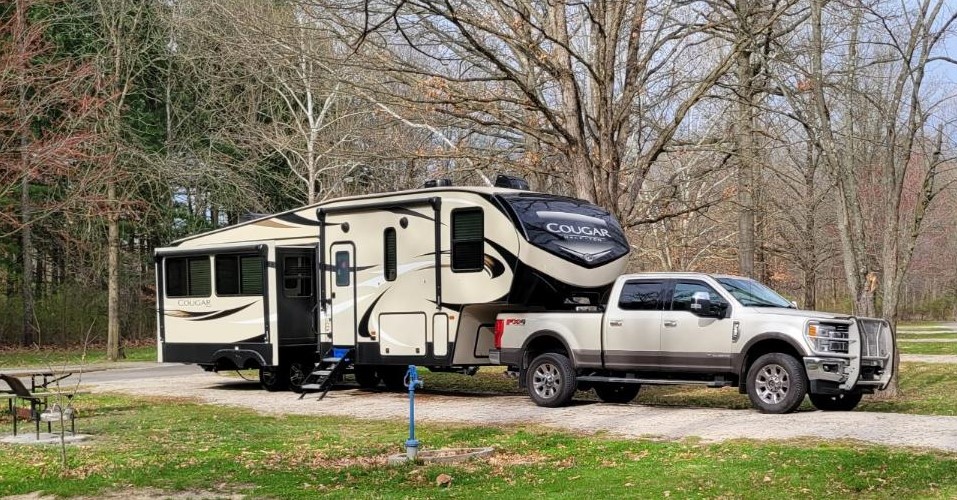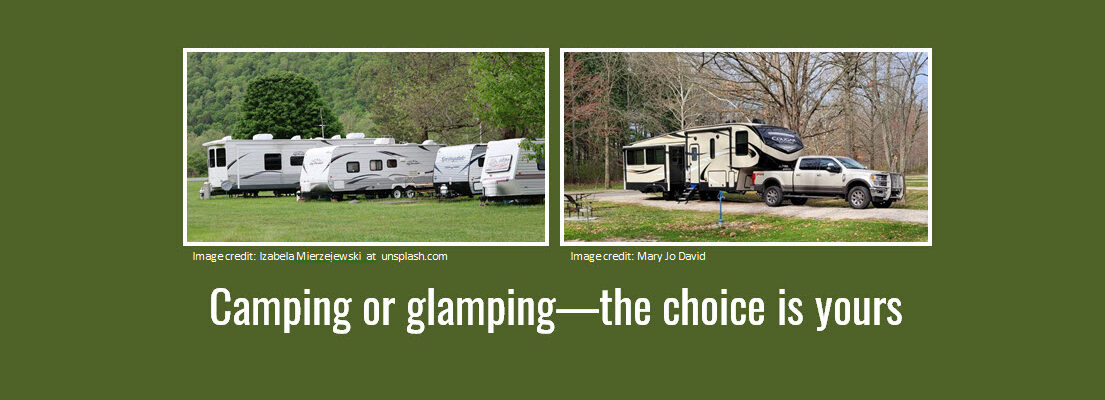Camping or glamping—the choice is yours
by Mary Jo David
After many enjoyable years of tent camping and then pop-up camping, our kids grew up, and we morphed into cushy campers, meaning we switched gears to trailer camping with real walls and a television!
Some may consider our current mode of fifth-wheel camping as “glamping,” but if you’ve ever seen celebrity motor homes like the ones owned by race car driver Jeff Gordon or mega movie star Will Smith, you’d realize that “glamping” is in the eyes of the beholder, and we’re not there yet!
A lot can be said for any form of camping, but here we’ll compare the pros and cons of pull-behind trailers vs. fifth-wheel trailers. Most of these insights are based on personal experience. Note: Check out SCN’s April edition if you’re interested in comparing tent camping vs. pop-up trailer camping.
To clarify, when you hear “pull-behind trailer,” or just “trailer” visualize one that attaches to a vehicle using a bumper hitch. On the other hand, a “fifth-wheel trailer” or just “fifth wheel” hooks into a hitch mounted in the bed of a pickup truck. As such, about 5 feet or so of the fifth-wheel trailer sits above the bed of the truck.
Towing: Trailers offer more flexibility when it comes to the vehicle you drive. They can be towed using a car, SUV, truck, or van, whereas a fifth wheel requires a pickup truck with a truck bed. Fifth wheels also tend to be larger recreational vehicles, so depending on the size, you’d likely need a 3/4-ton or 1-ton pickup. That said, most who have experience towing each kind of RV agree that fifth wheels are generally more stable, including in windy conditions, and easier to maneuver on turns and backing into camping spots.
Size does matter: When it comes to recreational vehicles, you’ll find more length flexibility when you’re looking at trailers vs. fifth wheels. Pull-behind trailers can range from 15 feet to 40 feet. While you can find some short-ish fifth wheels, the 28-foot model we first owned was a pretty standard size, and they go up from there, with many fifth wheels being 35- to 40-feet long.
Steps: Trailers are easier to get into and move around in. Their height from the ground usually only requires a step or maybe two. Once inside, trailers are all on one level. Fifth wheels generally require three or four steps from outside. Inside a fifth wheel, you will encounter another set of steps to get to the area that rests above the pickup truck bed. This area is frequently the main bedroom, but newer models sometimes use that area for a living room.
Height: Trailer ceilings, which are typically about about 7 feet high (sometimes less), are generally lower than fifth-wheel ceilings, which average 8 feet in height. Be aware, though, that the ceiling in the front of a fifth wheel can be lower—usually 6 to 7 feet high in newer models and less in some older models. Because of their outside height, fifth-wheel owners need to pay closer attention to low bridges, low-hanging branches, building overhangs, and other potential hazards.
Storage: In general, fifth wheels offer more storage beneath the RV—many refer to this storage as a “basement.” The larger basement in a fifth wheel is great for accommodating bulkier items like lawn furniture, golf clubs, storage bins, and a generator. On the other hand, if you’re pulling your fifth wheel with a pickup truck, you’ll find that you have less room for storage in the bed of the truck because the hitch for the fifth wheel sits inside the truck bed.
Resale: According to jdpower.com, the larger the camper, the more quickly it depreciates. Also, limitations in the types of vehicles that can pull a fifth wheel may mean fewer buyers are in the market for a fifth wheel vs. a pull-behind trailer. However, that may not impact sellers as heavily in rural areas like ours where many residents own pickup trucks.
No matter which you choose—a pull-behind trailer or a fifth wheel—there’s always something new to learn. A plethora of YouTube videos, online information forums, and even television shows offer advice on purchasing, maintaining, and selling recreational vehicles. How do I know? Because we use them—frequently.

Pull-behind trailers come in many lengths, typically ranging from 15 feet to 40 feet, and do not require a pickup truck for towing. Photo credit: Izabela Mierzejewski at unsplash.com

Fifth-wheel trailers also vary in length, but most tend to be 28 to 40 feet long, with about 5 feet in front extending over the pickup truck bed. Image credit: Mary Jo David


